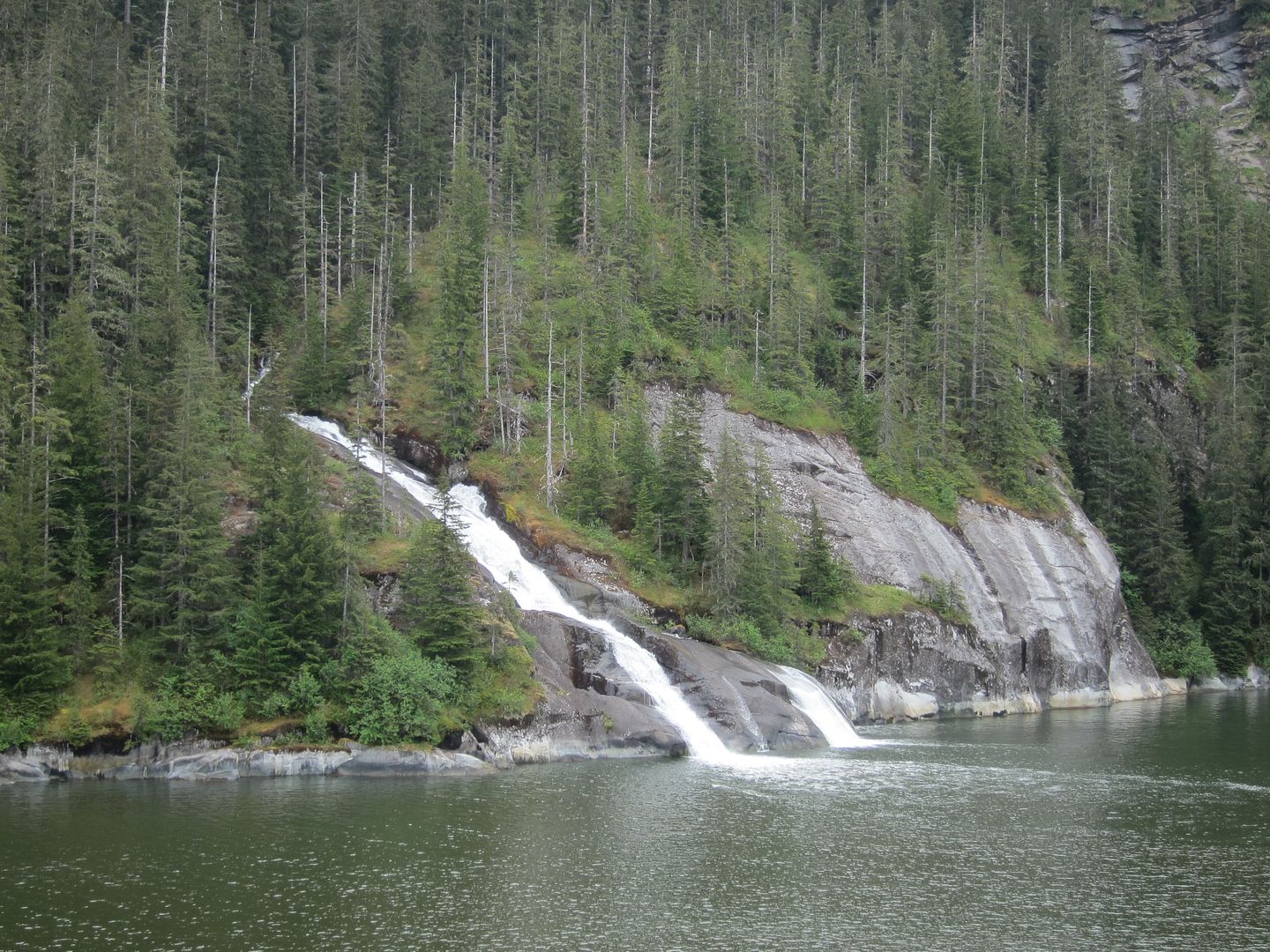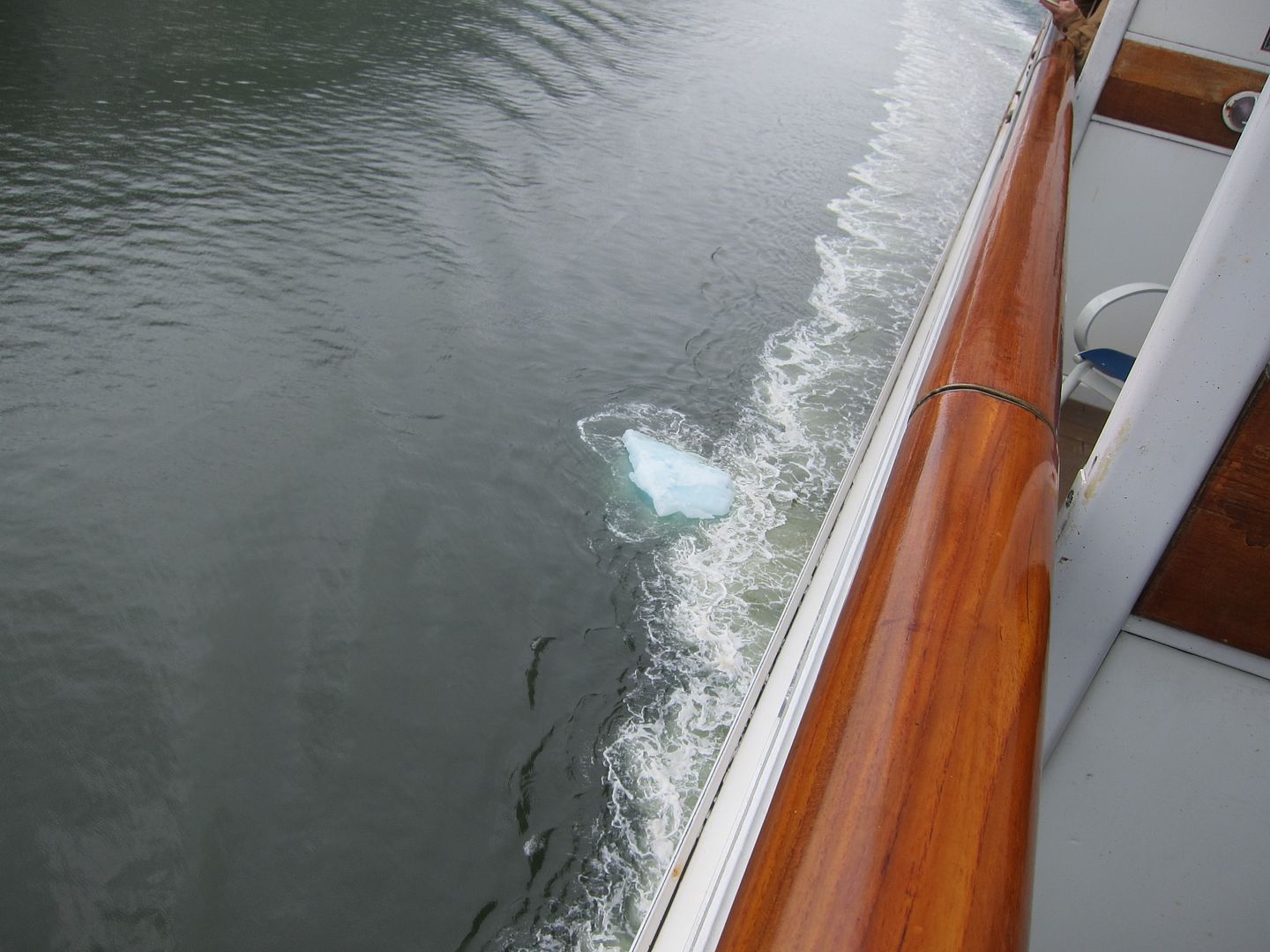Chapter 26
Beware the Frozen Heart
Previous Post | Next Post
Table of Contents
Now is probably a good time to address a question I’d had almost right up until we headed into Tracy Arm—what exactly is a fjord?
To understand that, however, the real question to ask is what exactly is a glacier? While I don’t pretend to be a scientist, I’ve tried to at least gather a working knowledge of how glaciers form and behave, so here’s my understanding (which, granted, might not be entirely right).
As snow gathers in particularly cold places, the new layers of snow that fall on top of older layers are forced by gravity to compress. The snow melts slightly and then refreezes over and over again, and the compression packs it into ice. Eventually, that ice gets packed into something even denser—known as glacial ice.
Glaciers are always technically on the move because all that weight has to go somewhere. From higher elevations, gravity drives the glacier downward as it eventually winds its way toward sea level. Since the ice is so heavy, it actually has the power to dislocate the earth as it moves downhill. and it leaves behind characteristic U-shaped valleys that can be extremely deep.
Of course, most glaciers actually formed back in the ice age, and they have been melting at a rate that can’t be matched by new snowfall. As their overall mass shrinks each year (at a faster rate than ever due to climate change), the glaciers are said to be “retreating.”
Now, about fjords. Many of the U-shaped valleys carved out by moving glaciers over thousands of years actually stretch all the way to the ocean. Since sea level has also constantly been on the rise for thousands of years —thanks, mostly, to the melting of glaciers around the world—many of these valleys have gotten filled in with water.
The result is a fjord: a narrow channel carved out by glacial movement and filled in with ocean water, which has towering mountains on either side of it because of the unique way that it was formed.
Okay, that’s my simplified understanding of how all the natural features we were sailing by were formed. Now here is how it all relates to our day in Tracy Arm. The fjord was the part we were sailing through right now, and the ultimate destination was Sawyer Glacier. As you’ll remember, though, we’d been warned that we might not make it all the way to the glacier itself because of how early it was in the season. From here on out, it was mostly going to be luck of the draw.
As we sailed, naturalist Doug Jones was occasionally allowed to talk over the ship’s PA system (which was also available as audio on our TV). Since we could see the bridge from our verandah, we’d often see Doug walking around while he talked.

The rules in Tracy Arm are extremely strict, however, and the ship is only allowed to make noise (public addresses included) during certain parts of the journey so as not to disturb the local wildlife. Doug would go from talking and telling anecdotes to suddenly being forced to cut off based on where we were on the voyage.
At first, the main noticeable natural feature was waterfalls seemingly everywhere.

There were also plenty of these frozen waterfalls that I still don’t really understand…


The water near a glacier is typically really silty because of all the different sediment that gets suspended from the glacial grinding.


Suddenly, the first signs of glacial ice started to appear.

Now, one obvious difference between glacial ice and regular ice is that bluish color that you can start to see. The reason why it appears to be blue is because it’s so dense that, as light passes through it, the ice literally absorbs every color in the spectrum except blue.
The first icebergs we saw were pretty harmless.


It was certainly clear that we were in a U-shaped valley carved out by the movement of the glacier when we saw sights like this.

This fjord definitely contained the most awe-inspiring sights we’d seen on our already scenic cruise.



Now, one thing that Doug Jones told us to look our for during his spiel was the fact that when the icebergs flip over, their undersides are much more bluer than the white that’s usually on top. Here’s a berg mid-flip to showcase the difference.

Before too long, our path became even more dotted with ice, but almost all of it was really small. We had our fingers crossed that we’d be able to get as close to the glacier as possible.


I feel like it’s hard to oversell the benefits of our verandah when describing our day in Tracy Arm. We were getting these sights without having to fight the crazy crowds that had formed on the public decks, and we could just sit in our deck chairs and enjoy the experience in total peace.




Unsurprisingly, the further we ventured into the fjord, the colder it was getting outside, and the larger the icebergs we passed.
Luckily, we could simply navigate around bergs like this one, which I think they told us was at least 50 feet across.

It started feeling like a crapshoot the closer we got because the ice was piling up, but we hadn’t gotten to even see the glacier yet.

Occasionally, with bergs like this one, we would feel the ship bumping up against them to dislodge them from our course. It made quite the noise and jolted the ship a bit.



Finally, we could see the last bend between us and a view of Sawyer Glacier. Would we make it before we had to turn back??

Previous Post | Next Post
Table of Contents
Support the Wandering Mouseketeers and get yourself a little something! Do your online shopping via our Amazon link!
FollowShare
